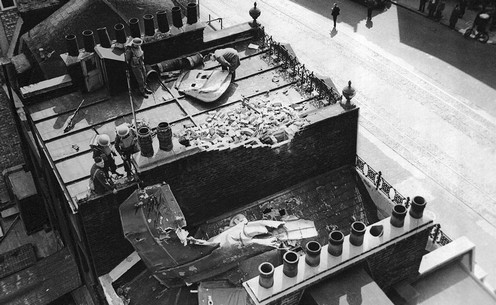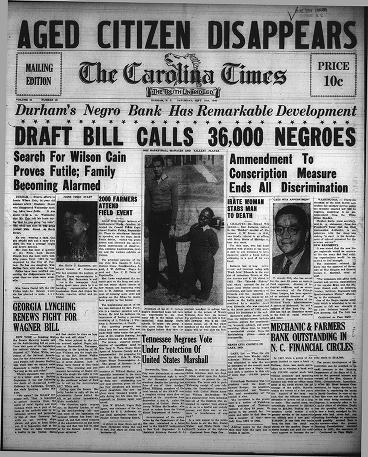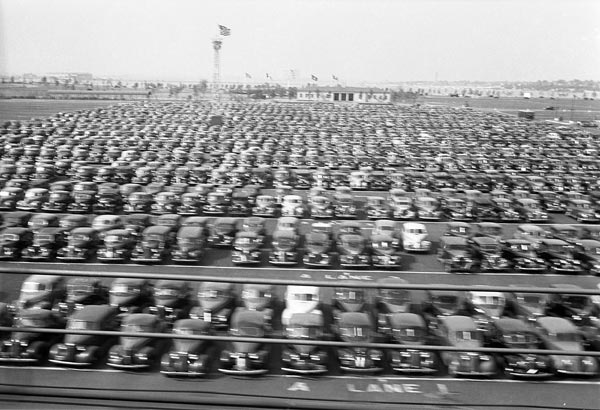Saturday 21 September 1940
The wolfpack assembled by Kapitänleutnant Günther Prien in U-47 and U-boat Control (BdU) shadows Convoy HX 72 throughout the night. The convoy, about 400 miles west of Ireland, has over 40 ships, temporarily, no escorts.
U-99 (Kapitänleutnant Otto Kretschmer) gets things rolling with a series of attacks between 03:12 and 04:47. It torpedoes and sinks 9154-ton British tanker Invershannon. There are 32 survivors and 16 perish.
U-99 then torpedoes and sinks 3668-ton British freighter Baron Blythswood. All 34 aboard perish.
U-99 then torpedoes and sinks 5156-ton British cargo ship Elmbank. There are 54 survivors and 2 men perish.
U-48 (Heinrich Bleichrodt) then torpedoes and sinks 4409-ton British timber freighter Blairangus at 06:14. There are 28 survivors and 6 men perish.
The five escorts from England for Convoy HX 72 - sloop Lowestoft, destroyer Shikari and 3 corvettes, Calendula, Heartsease, and La Malouine - arrive during the afternoon to find a convoy in ruins. However, the newly arrived escorts don't do much good. The wolfpack continues to shadow the convoy, waiting for darkness.
U-100 (Kptlt. Joachim Schepke) takes its turn later in the morning. At 23:10, it fires off several torpedoes in quick succession.
U-100 first torpedoes and sinks 8286-ton British refrigerated freighter Canonesa (Master Frederick Stephenson). There are 62 survivors and one man perishes.
U-100 then torpedoes and sinks 4608-ton British freighter Dalcairn (Master Edgar Brusby). All 42-48 (sources vary) on board survive.
U-100 also torpedoes and sinks 10,364-ton British tanker Torinia, which has a full load of fuel oil (13,815 tons). There are 50 survivors, five crewmen perish.
Shortly afterward, U-48 finds another target. At 23:38, it torpedoes and damages 5136-ton British freighter Broompark, carrying lumber and metal. One man perishes. Most of the crew abandon ship, but the master and mate shift ballast and bring it back to an even keel. This enables them to restart the engines and make port. Master Olaf Paulsen receives the OBE and Lloyds War Medal for Bravery at Sea.
U-138 (Oblt.z.S. Wolfgang Lüth), meanwhile, is still shadowing Convoy OB 216 further east. At 02:27, it torpedoes and badly damages 5145-ton British freighter Empire Adventure. The crew abandons ship, but the burning hulk remains afloat. It sinks on the 23rd after being taken in tow. There are 18 survivors and 21 men lost.
Elsewhere, Canadian sailing ship Imogen runs aground in rough weather on the east coast of Nova Scotia and is lost.
Royal Navy submarine HMS Tuna (Captain "Ginger" Cavenagh-Mainwaring) torpedoes and sinks 7230 ton captured Norwegian freighter Tirranna near Bordeaux. The Tirranna had been captured by the German raider Atlantis in the Indian Ocean. It carries 274 crew from the British freighter Kemmendine and other ships sunk by the Atlantis. There are 86 deaths of the captured British crewmen (sources vary) and one death among the 19-man prize crew. News of the sinking of the Tirranna is picked up by the Atlantis a week later and seriously damages morale.
The Royal Navy sets its ships in motion in final preparations for Operation Menace, the attack on Dakar. Aircraft carrier HMS Ark Royal, battleships HMS Barham and Resolution, and cruiser HMS Devonshire lead an armada of smaller ships out of Freetown, Sierra Leone. Included are French sloops Commandant Domine, Commandant Duboc and Savorgnan De Brazza. Already at sea patrolling off Dakar are cruisers HMS Cumberland and Dragon and HMAS Australia. The Cumberland returns to Freetown on a quick stop to refuel, and cruiser HMS Dorsetshire also is on the way to Freetown from Simonstown. All of the ship movements are intended to come together on the 22nd to form the greatest striking force of the Royal Navy in the war to date.
Convoy FN 287 departs from Southend, Convoy FS 288 departs from Methil, Convoy OB 217 departs from Liverpool, Convoy HX 75 departs from Halifax, Convoy BHX 75 departs from Bermuda, Convoy BM 1 departs from Bombay.
 |
| F/O Francis N "Fanny" Brinsden undertakes a cockpit check of Spitfire Mk I QV-B prior to takeoff from RAF Fowlmere. 21 September 1940. |
Bowing to the inevitable, the British government officially recognizes the London Tubes as air-raid shelters. The subway trains shut down at night anyway, so the stations are quiet. The stations, which usually close during the night, already have been converted into makeshift aid stations, bunk beds, pantries and other accouterments of civilization. The government itself already is using the tunnel on the Aldwych branch to store antiquities from the British museum, such as the Elgin Marbles. The British also have constructed many massive underground bunkers in discreet locations to protect government officials in case of an invasion.
The weather is fine again, but the Luftwaffe, as has been its practice recently, gets a late start. The morning is occupied with reconnaissance flights and an occasional lone "pirate" raider, such as a single Junkers Ju 88 of LG 1 which attacks the Hawker Aircraft Factory and leaves some unexploded bombs. There are small raids on RAF Biggin Hill and RAF Kenley, but the defending fighters from those fields and RAF Croydon prevent any damage.
Around 18:00, a large force of about 200 aircraft attacks in the waning daylight. They focus on Fighter Command fields south of London. The Duxford "Big Wing" rises in response, along with the usual squadrons of AVM Keith Park's No. 11 Group.
London and Liverpool are hit during the night. The London East End and the docks, as usual, suffer the worst.
Handling unexploded bombs has turned into a major project for the British. At Ipswich, a 1000kg "land mine" has to be blown up where it lands, creating a crater 50 feet wide and 25 feet deep. It destroys an estimated 70 houses and damages 750 more, with a lot of broken glass. At the Hawker Aircraft Factory, Lt. John MacMillan Stevenson Patton of the Royal Canadian Engineers tows a bomb to a nearby bomb crater to detonate it. He receives the George Cross. Lt-Cdr Richard John Hammersley Ryan and CPO Reginald Vincent Ellingworth perish as they are trying to defuse a magnetic mine in a warehouse (both earn the George Cross posthumously). Another man, Leonard John Miles, also earns the George Cross when he perishes while warning others of a nearby unexploded bomb.
Overall, it is one of the quieter days of the battle. Losses on both sides are in the single digits. Adolf Galland of JG 26 downs a No. 92 Squadron Spitfire west of Ashford for his 37th victory. He is just behind Werner Mölders, who receives the Oak Leaves to his Knight's Cross of the Iron Cross medal for being the first fighter pilot to achieve 40 victories on the 20th
 |
| Parts of a Dornier Do 17 lie on a London rooftop near Victoria Station. 21 September 1940. |
Battle of the Mediterranean: The RAF bombs Sidi Barrani and makes reconnaissance flights across the desert. The South African Air Force chips in as well. The Italians, for their part, raid Alexandria and Haifa, with the latter a particularly productive raid.
At Malta, the police are instructed to investigate shops for hoarding. These spot checks are authorized by The Food and Commerce Control Officer (FCCO). Shortages, the FCCO reports, are appearing in common staples despite supplies of these items on hand that are known to be adequate. The theory is that the owners of stores that have large hoards figure they will be able to charge high black-market prices in the event of real shortages. Homeowners, too, are stockpiling staples.
Bulgarian/Romanian Relations: The Bulgarian 3rd Army takes possession of Southern Dobruja, incorporating it into Bulgaria per the agreement with Romania.
- United Australia Party, 24 seats;
- Country Party (allied with UAP), 14 seats;
- Labour, 32;
- Non-Communist Labour, 4.
In addition, the government announces that another division, the 9th Australian, will be raised.
American Military: The Greenslade Board, reviewing the new US bases obtained from the British in the destroyers-for-bases swap, departs from Boston for Argentina aboard the cruiser USS St. Louis.
American Homefront: The James Cagney flick "City for Conquest" opens. It also stars Ann Sheridan and Arthur Kennedy.
 |
| The Carolina Times, 21 September 1940. |
September 1, 1940: RAF's Horrible Weekend
September 2, 1940: German Troopship Sunk
September 3, 1940: Destroyers for Bases
September 4, 1940: Enter Antonescu
September 5, 1940: Stukas Over Malta
September 6, 1940: The Luftwaffe Peaks
September 7, 1940: The Blitz Begins
September 8, 1940: Codeword Cromwell
September 9, 1940: Italians Attack Egypt
September 10, 1940: Hitler Postpones Sealion
September 11, 1940: British Confusion at Gibraltar
September 12, 1940: Warsaw Ghetto Approved
September 13, 1940: Zeros Attack!
September 14, 1940: The Draft Is Back
September 15, 1940: Battle of Britain Day
September 16, 1940: italians Take Sidi Barrani
September 17, 1940: Sealion Kaputt
September 18, 1940: City of Benares Incident
September 19, 1940: Disperse the Barges
September 20, 1940: A Wolfpack Gathers
September 21, 1940: Wolfpack Strikes Convoy HX-72
September 22, 1940: Vietnam War Begins
September 23, 1940: Operation Menace Begins
September 24, 1940: Dakar Fights Back
September 25, 1940: Filton Raid
September 26, 1940: Axis Time
September 27, 1940: Graveney Marsh Battle
September 28, 1940: Radio Belgique Begins
September 29, 1940: Brocklesby Collision
September 30, 1940: Operation Lena
2020


No comments:
Post a Comment